Read update
- This article has been updated to clarify details about purchasing card upgrades through the store.
Online collectible card games are a dime-a-dozen these days. While the best card games on Android are strategic and engaging affairs, many are just cheap ways to rip off an IP (intellectual property). That was my fear when I loaded Marvel Snap, a game that seemed primed to harvest the cash of Marvel's fanbase. However, it might be the best card game I've played.
Despite my misgivings, I had high hopes for Marvel Snap. Ben Brode, former Hearthstone director, heads the development studio (Second Dinner). His experience is felt in Marvel Snap, but don’t worry; this isn't a Hearthstone clone. Gone are the bewildering array of cards, overpowered combos, and pay-win-mechanics. Instead, you have an easy-to-learn, nail-bitingly tense, fast-paced game that never had me throwing down my phone in protest.
The above video captures the majority of critical parts of the gameplay. The tutorial (which I didn't record) is short and sweet, explaining the game's mechanics over a couple of games against the AI. You're then immediately thrown into PvP, which seems abrupt at first. However, despite several missteps, I soon racked up a string of victories.
Monetization and unlocking new cards
Before I get into the fantastic gameplay, let's talk about monetization. Instead of buying card packs, you’ll unlock cards by upgrading your existing cards’ visuals. You can only upgrade cards if you have enough Boosters, which you can unlock through gameplay or the store. However, you can't purchase unlimited amounts of boosters through the store. Three cards can be upgraded without boosters every eight hours, so while those willing to pay will have a slight advantage, it's not as extreme as in other collectible card games.
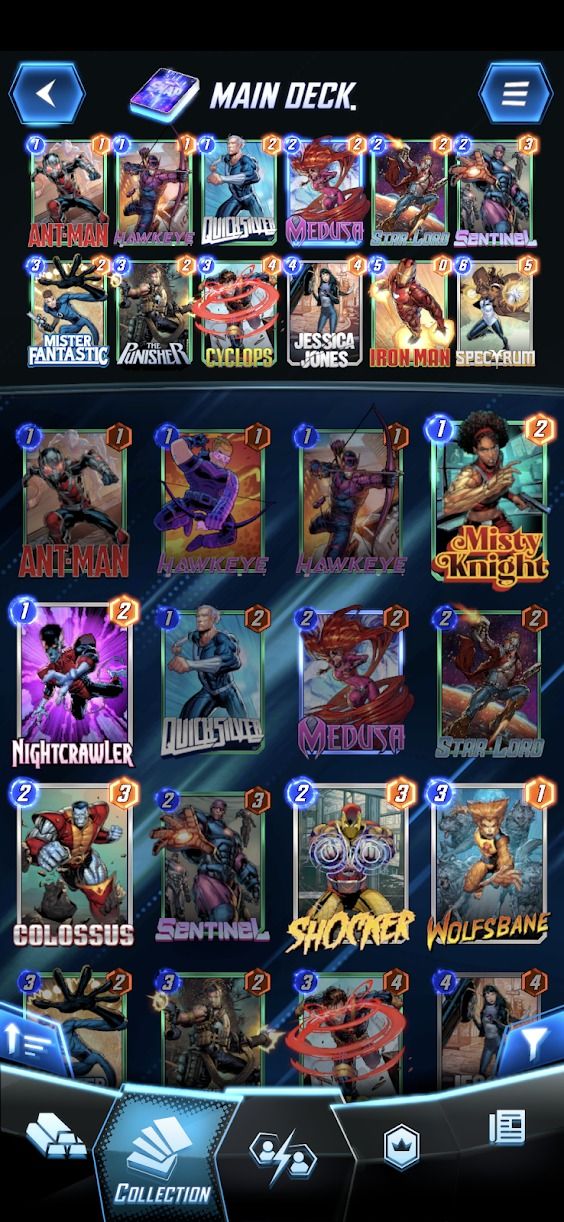
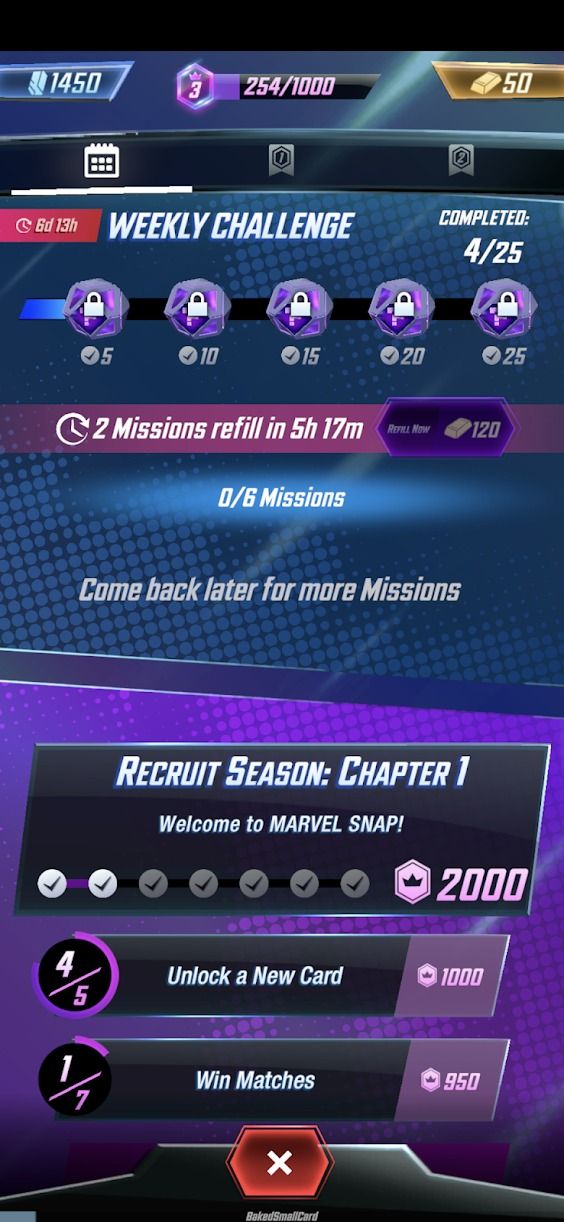
There are two in-game currencies, Credits, and Gold. You'll use Credits to upgrade cards and Gold to buy card variants and more credits. You can earn Credits and Gold through the battle pass and additional Credits by ranking up your collection and increasing your competitive rank.
At the time of writing, the card variants currently available in the store cost 700 Gold each, equivalent to £9 ($10). Thankfully, I could purchase that amount of gold with no leftovers.
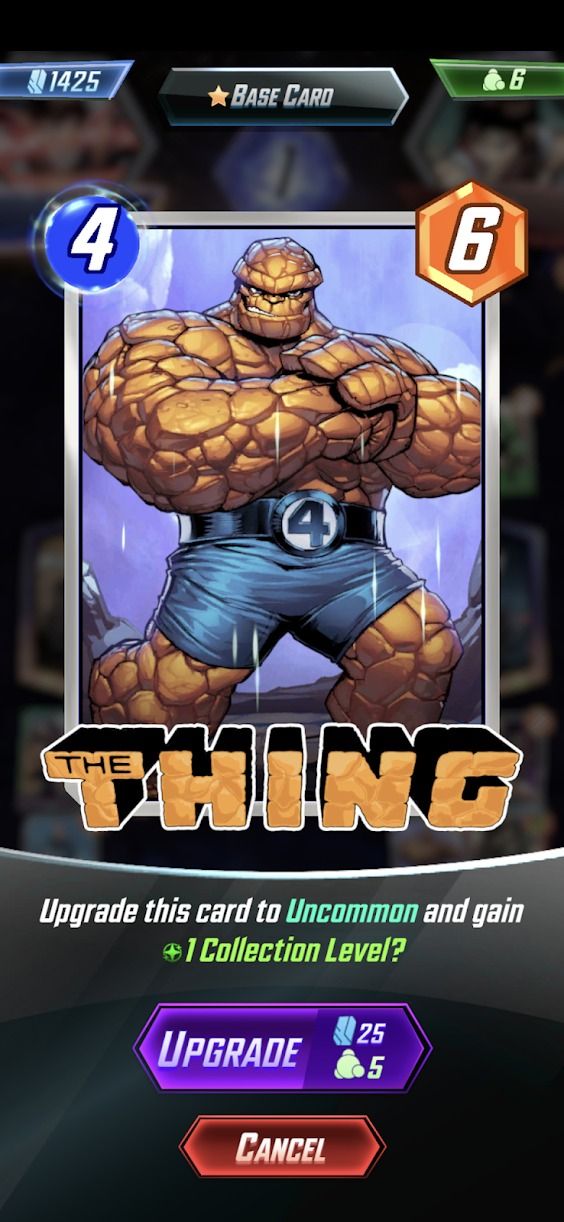
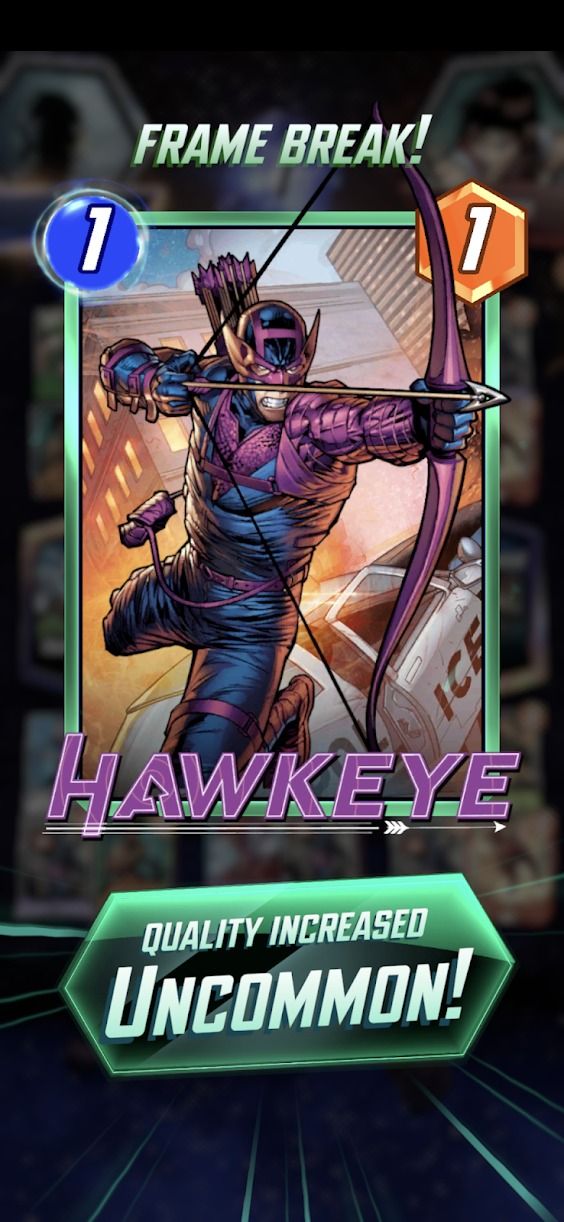
Upgrading your collection is how you'll unlock new cards and more Credits and Boosters. You'll go up a level each time you upgrade a card. Upgrading a card adds fancy visual effects but no improvement to its performance in-game. I'm a massive fan of this mechanic, as I felt like my playtime was fairly rewarded, and I wasn’t being punished for not pulling out my wallet.
Game mechanics, deck-building, and competitive play
Each card in Marvel Snap has three parts. An energy cost, power cost, and ability. You can play as many cards as you want in a turn until your energy is used up, with each turn increasing your energy limit by one. It's a similar mechanic as Hearthstone’s Mana costs.
The gameplay revolves around the power cost for cards. Each match is divided into three areas, each able to hold up to four cards. You can play a card in any area during your turn, and there they'll stay for the game (with a couple of exceptions). At the end of the game, the player with the most power wins that area. Win at least two areas, and you'll win the game. It's dead simple in theory, but with only six turns in a game, placing a single card in the wrong area can lose you the match.
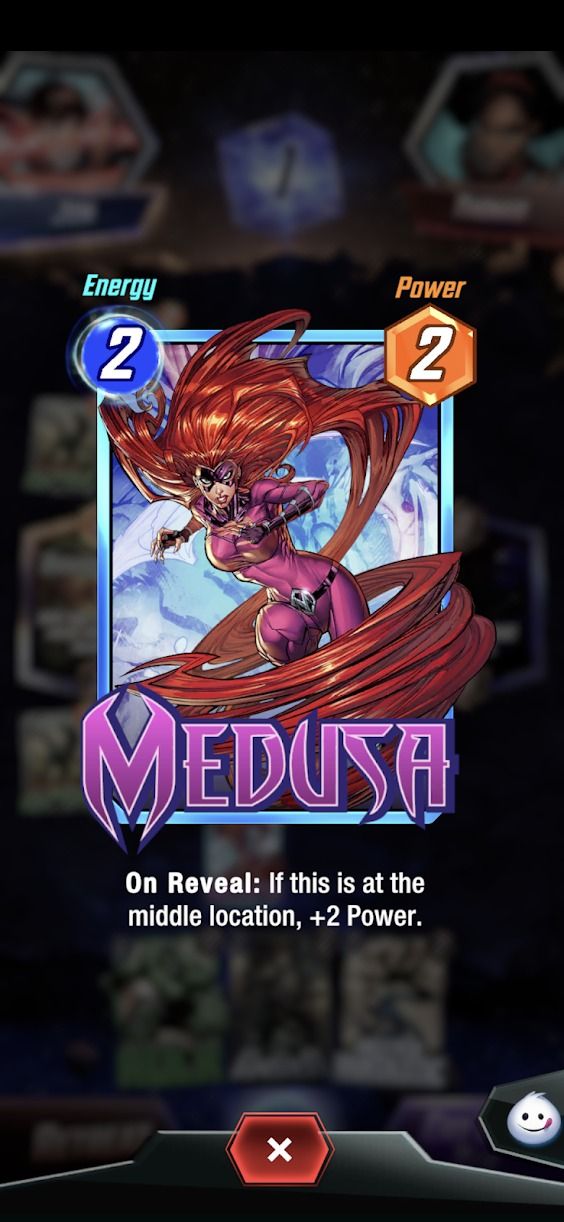
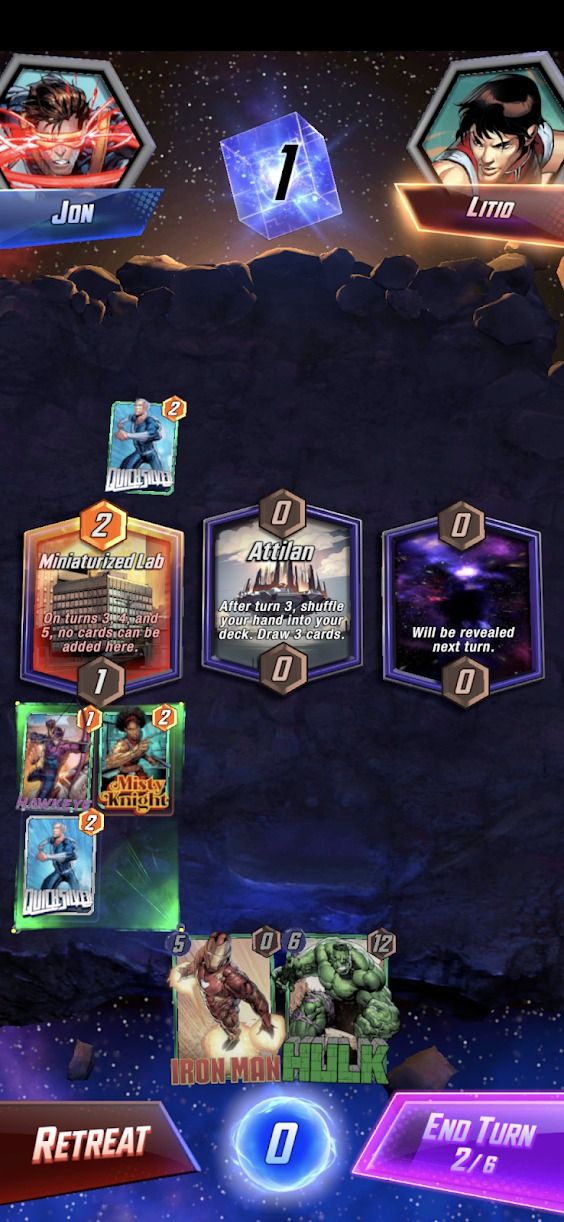
Not every card has an ability, but those that do are integral to your success. Increasing your power every turn, rewarding you for anticipating your opponent's moves, and moving between areas are just some of the abilities in-game. These are good fun, and thanks to the deck-building (more on that in a moment), it's easy to build decks that synergize well.
But what sells the game for me are the area abilities. Each area contains a random ability assigned at the start of the game. You'll only see one area's ability first, with the other two revealed in subsequent turns. These abilities completely change how each match plays. I've included a couple of screenshots below, and even those unfamiliar with Marvel Snap can see how dramatic an effect they have.
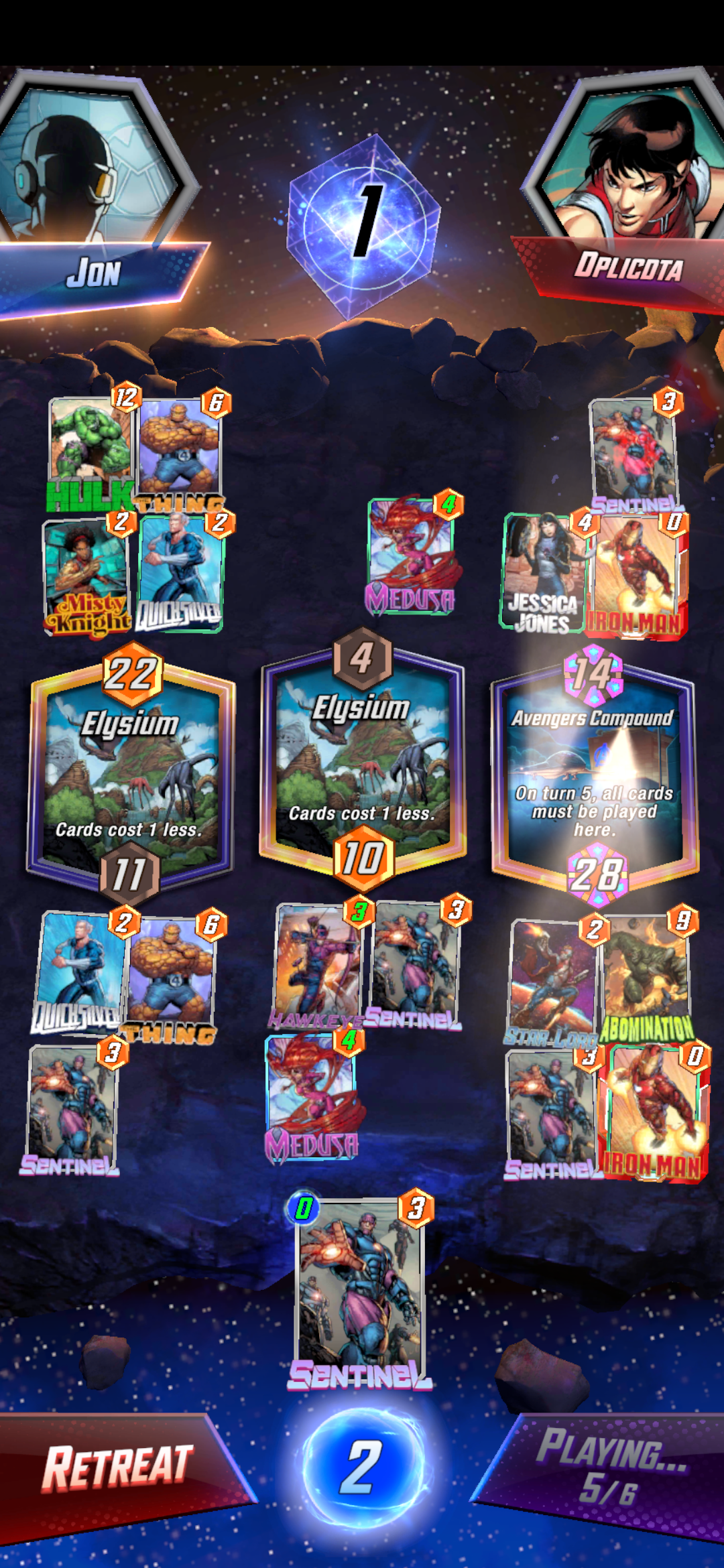
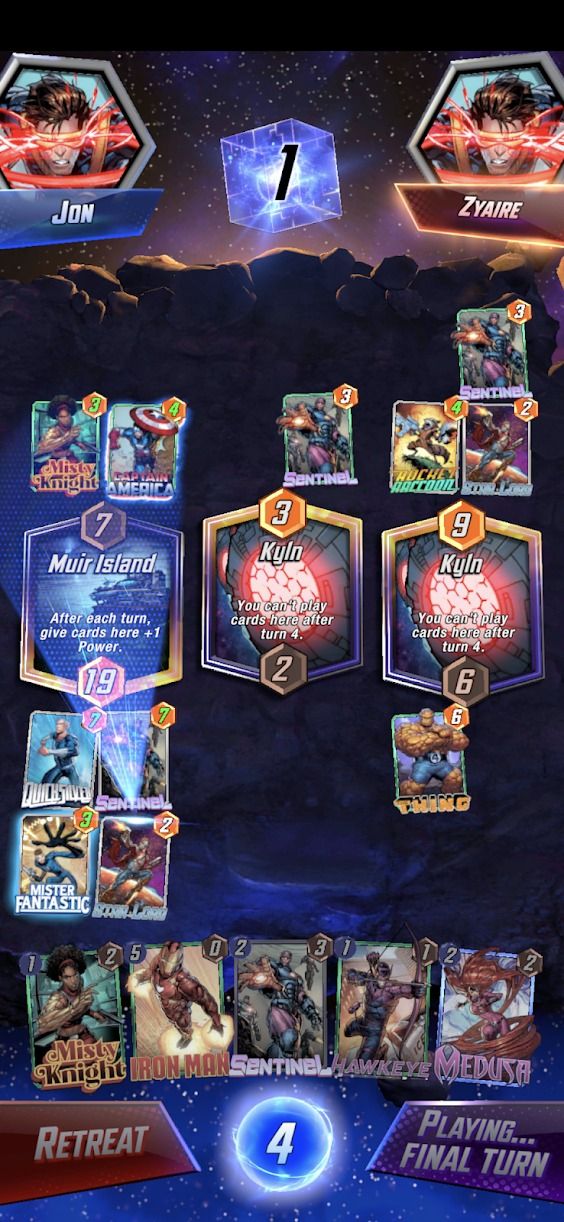
The deck building in Marvel Snap is a breeze. Only 12 cards are allowed in a deck, with no duplicates. While I'll have to wait until I unlock more advanced cards to make a final judgment, I had no trouble figuring out good combinations of cards in my time with the game.
Marvel Snap is a competitive release at heart. Earn cubes for winning games, lose cubes for losing. Rank is determined by how many cubes you own. It’s simple but with a twist.
If you win after six turns have passed, you'll win two cubes, and your opponent will lose two. But if your opponent concedes early, you'll only win one, and they'll lose one. If you're confident, you can choose to Snap at any point, and double the number of cubes won or lost. This is an excellent way of putting pressure on your opponent, as they may choose to concede rather than risk losing four cubes. It's a neat way to ensure that conceding a game isn't an entirely unpleasant experience for both players.
A fantastic game for all stripes of card players
Marvel Snap is a must-play for veteran card players and newcomers alike. You certainly don't need to be a Marvel fan to enjoy it (although it will help), and even those who prefer sorting through thousands of cards to find the perfect deck will find the tightly focused nature of Snap's deck-building rewarding. It might even be one of the best Android games around.
UPDATE: 2022/10/19 04:39 EST BY JON GILBERT
This article has been updated to clarify details about purchasing card upgrades through the store.

